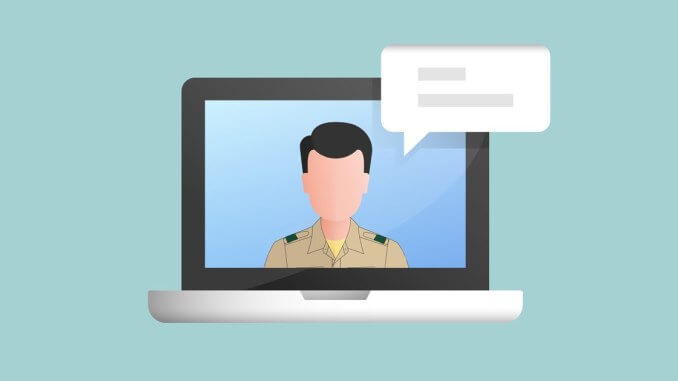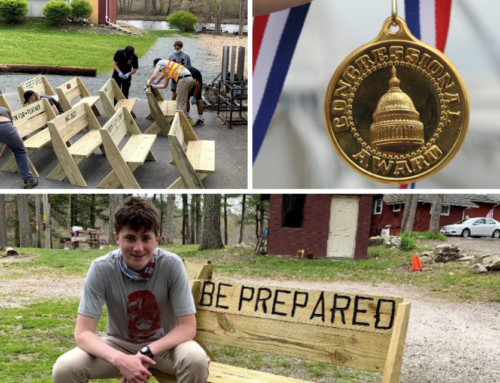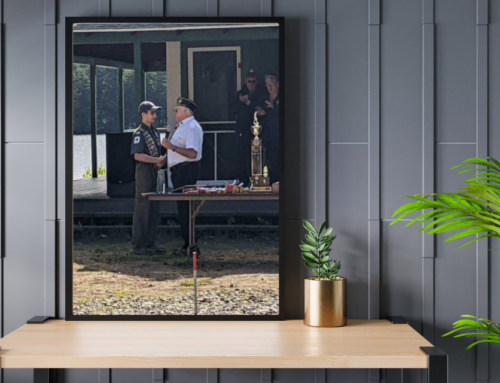Scouting Magazine has recently posted an article regarding using video conferencing to conduct Board of Reviews.
Board of Reviews are an integral part of the Advancement program for Scouts BSA Troops, Venturing Awards, and Sea Scout ranks. While making considerations for other people’s health and safety through social distancing, we encourage all Unit leaders to look at this article and consider using these resources and guidelines to conduct the Scouting program through virtual Boards of Review.
From Scouting Magazine article: How to conduct a board of review through videoconferencing
What guidelines should be followed in a video board of review?
The following is adapted from the BSA’s Guide to Advancement (section 8.0.1.6).
- For Eagle Scout boards of review, the local council must grant permission to hold it by videoconference. Other ranks do not need approval but should follow the requirements below.
- Test all equipment, including cameras, lighting, microphones, software, and internet connection.
- Make sure everyone is visible — including all members of the board of review, the Scout and any observers with the Scout. No one within hearing range on either side shall be off-camera. It is important to consider your technical capabilities when planning how many board of review members to involve. Observers should be minimized for any board of review, and this applies especially to videoconference reviews. Their presence can change the discussion dynamics.
- A parent or guardian of the Scout, or two registered adult leaders (as required by the Guide to Safe Scouting) who are familiar with these requirements for videoconference boards of review, must be directly present with the Scout at the beginning of the conference. The Scouters may be from the nearest council, district or unit. Their role is to verify that the Scout is in a safe environment and that the board of review appears to be in compliance with these requirements. Once all the members of the board of review are present on their end of the call and introductions are completed, and the review is about to begin, anyone present with the Scout must leave the room or move out of hearing distance unless they have specifically been approved to remain as observers.
- Once the review process has been concluded, if the Scout is under age 18, the Scout’s parent or guardian, or two registered adult leaders, must rejoin the Scout. Their purpose is to be available to answer any questions that may arise, to join in the celebration of the Scout’s accomplishment, or to be party to any instructions or arrangements regarding the appeals process or the reconvening of an incomplete review. Once this is done, the board members end the call and sign off.
- Videoconference boards of review must not be recorded.
- If an appeal is necessary (as outlined in the Guide to Advancement), this may be conducted via videoconference as well.
Videoconferencing tips
- Look presentable. Just as you would want to look sharp in your uniform for an in-person board of review, the same should apply to one conducted via video.
- Find a quiet space with a clean background. Try to minimize audio and visual distractions.
- Test your equipment. Enlist a friend or family member to help you test your connection, making sure they can see and hear you with minimal lag.
- Try for eye contact. Though your instinct will be to look at the screen to see the board of review members, spend some time looking directly into the camera. It may feel strange, but it will look better to the people watching.
Free videoconferencing options
Note: Each of the options below has a paid option, but I’m outlining the features of the free tier.
- Google Hangouts: Easy to use, no time limit, allows up to 10 participants
- Zoom: Great features, 40-minute time limit (for group meetings), allows up to 100 participants
- Skype: Good stability, four-hour time limit, allows up to 50 participants
- UberConference: Excellent video quality, 45-minute time limit, allows up to 10 participants








